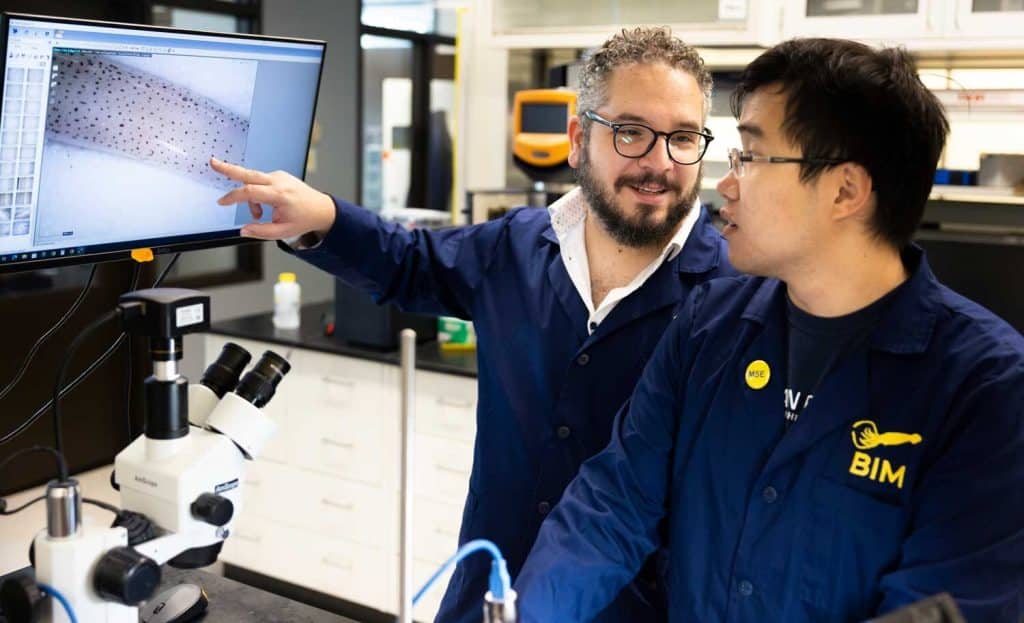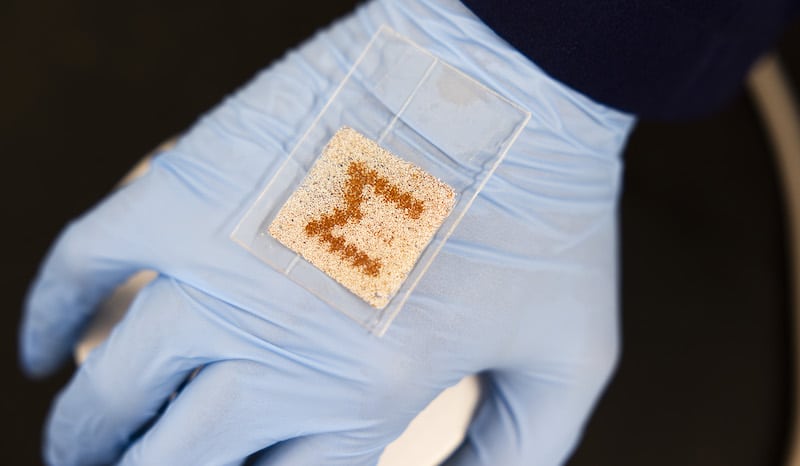A groundbreaking screen developed by the University of Michigan engineers can store and display encrypted images without using electronics, relying on magnetic fields instead.
Drawing inspiration from the color-changing skin of squids, this flexible screen showcases images at a similar resolution to the natural pigment sacs found in these sea creatures.
As reported in Advanced Materials, the device presents a unique system for image encryption and computing. “It’s one of the first instances where mechanical materials leverage magnetic fields for system-level encryption and processing without any electronics involved. Plus, this screen can even wrap around your wrist,” said Joerg Lahann, the Wolfgang Pauli Collegiate Professor of Chemical Engineering and co-author of the study.

This innovation opens up many applications, especially when electronics and power sources could be more practical. It could be used for clothing, ID badges, barcodes, or e-book readers. When exposed to a standard magnet, a single screen can display either a public or private encrypted image placed over a complex array of magnets as an encryption key.
Abdon Pena-Francesch, U-M assistant professor of materials science and engineering, explained, “This device can be programmed to reveal information only when the right magnetic ‘keys’ are applied. There’s no electronic code to hack, which adds a layer of security.” The display can be erased with a simple shake, similar to an Etch-A-Sketch, but the image can be restored when exposed to a magnetic field. The screen’s pixels, made of magnetic beads that flip between orange and white, rotate based on their exposure to magnetic fields. This flipping mechanism provides the contrast needed to display images.

Specific pixels, made with iron oxide magnetic particles, can be programmed with relatively weak magnetic fields. However, pixels with neodymium require stronger magnetic pulses for polarization changes, making them more secure. Multiple private images can be encoded and displayed using different magnetic grids from a single public image. The screen’s resolution is modeled after the squid’s pigment sacs, which expand and contract to create high-contrast color changes. Zane Zhang, the study’s first author, explained, “We optimized the size and distribution of the screen’s pixels to match the squid’s natural ability to produce high-contrast visuals.”
This project received funding from the American Chemical Society Petroleum Research Fund and the National Science Foundation, with the University of Michigan submitting an invention disclosure for the technology.
Source: techxplore.com


